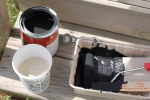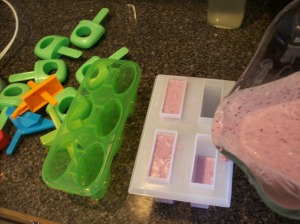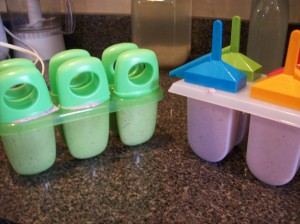Over the last few years, we have made a lot of changes to our diet. These changes include moving from commercial meats to grass-fed/pastured/local meats, from farm-raised seafood to wild-caught seafood, from conventional eggs to pastured soy-free eggs, from conventional to organic fruits and vegetables, from conventional milk to raw grass-fed milk, etc. All of these changes meant that we had to keep expanding our grocery budget.
 I feel like I’m finally making progress and getting the grocery budget back under control. We’re still spending more than we used to, but we’ve reined it back in a good amount. I wanted to write this post to offer up our experience so that maybe someone else can learn a thing or two to help get their costs down as well. I’ll skip going into the reasons for our various dietary changes, as that would be well beyond the scope of this post. Without further ado, here are some of the things we’ve done to get our grocery spending down:
I feel like I’m finally making progress and getting the grocery budget back under control. We’re still spending more than we used to, but we’ve reined it back in a good amount. I wanted to write this post to offer up our experience so that maybe someone else can learn a thing or two to help get their costs down as well. I’ll skip going into the reasons for our various dietary changes, as that would be well beyond the scope of this post. Without further ado, here are some of the things we’ve done to get our grocery spending down:
1. Meat CSA (Community Supported Agriculture). Grass-fed/pastured meats can be a huge expense. We get our meats from a local farm through their CSA program. We pay for 6 months of meat at a time and then pick up our share (20-22 pounds of meat) each month. Since we’re buying in bulk, the farm can offer us a discounted price. We pay about $5.50/pound for a mix of chicken, beef and pork (and tiny bit of lamb and goat). For grass-fed/pastured meats, that’s a pretty great price. In case you’re wondering what kind of meat cuts we get, our monthly share always includes two whole chickens, three pounds of ground beef and miscellaneous other cuts like roasts, steaks, sausage, etc.
2. Veggie CSA. We also started getting our vegetables from a local farm through their CSA program. We pay a lump-sum at the beginning of the season and then pick up our weekly share (approximately 3/8 of a bushel or about 3 gallons). The veggies (plus some melons and berries) are grown organically and the cost comes out to about $16/week. Again, that’s quite a bit of organic produce for that price. I’d link to their website, but they don’t have one. If you’re in the Nashville area and want more info, you can email them at eco-gardenscsa@bellsouth.net.
3. Bulk co-op. We get various dry goods and produce items through a bulk co-op. Basically, people in our local area place orders and then a truck comes once a month or so and drops off all the orders at a drop-off point. You can get things like 25-pound or 50-pound bags of grains, flour, or dry beans; seasonal produce by the bushel (a bushel is about the size of one apple box); raw nuts; etc. Some of the things I have purchased this way are: organic wheat and spelt berries (to grind into flour), organic rolled oats (I make homemade granola cereal, so we go through lots of oats), organic raisins, organic barley, organic dry white beans, raw almonds, rapadura sugar, peaches and lots of apples. If the quantities are too large for you to manage, perhaps you could split some items with a friend.
4. Making as much as I can from scratch. First and foremost, learn how to make meals from scratch. Then add to your repertoire and learn how to make your own chicken stock, beef stock, yogurt, pickles, sauces, drinks, granola, bread, muffins, pancakes, waffles, tortillas, pita bread, salad dressing, snacks, beef jerky, ice cream, popsicles, hot chocolate, smoothies, trail mix, dips, nut butters, etc. Buy as few pre-packaged things as possible, which will not only cut your costs but also help you eat healthier by avoiding food additives, conditioners, colorings, flavorings, preservatives, anti-caking agents, MSG, high fructose corn syrup, partially hydrogenated oils, etc.
5. Price comparison shopping. I had been making mental notes of what was cheapest to buy where. I finally put in the extra effort to make an actual spreadsheet and definitively see what I should be buying where. (Call me a nerd if you must. I won’t be offended.) I put various store names across the top of the sheet and various items down the left side of the sheet. To compare apples to apples, as they say, I broke all the prices down into the price per 16 ounces. That is, if the item was $2 but came in a 2-pound package, I would list the price as $1. Then it was really easy to see which store had the best price. I organized the list so that all the items that a particular store had the best price on would be grouped together and then made a list to post on my fridge. Keep in mind, you don’t want to make yourself crazy with going to too many different stores. From my comparison spreadsheet, I made a shopping list for Trader Joe’s, Costco and Whole Foods (plus the Bulk Natural Foods co-op), because I get enough things at good prices at those stores to make it worthwhile to do a once-a-month (or so) trip in addition to my regular weekly shopping at WalMart. I have the list posted on my fridge and whenever I go to one of those stores, I check the list to see which items I need to get while I’m there. Note: the majority of the items I get at Whole Foods are from their bulk bins, as those are their items with the best prices. Whole Foods is nicknamed Whole Paycheck for a reason 🙂 I uploaded a copy of my spreadsheet in its current state as of January 27, 2014. It is by no means comprehensive, but it works for me and I keep adding to it. Click the version you want: Price Comparison Excel version OR Price Comparison PDF version.
6. Costco. Costco has been carrying more and more organic/healthy items. Yes, there’s an annual membership fee of $55, but it is definitely worth it for us. I’ve done the math. Some of the items I get from Costco are: organic produce, wild-caught seafood, grass-fed butter, organic coconut oil and raw nuts. They also generally have a great price on gas, by the way, as well as plenty of other non-food items that don’t relate to this post.
7. Eating less meat. My husband and I used to be very heavy meat-eaters. When we made the switch to higher-quality meat, we traded quantity for quality. In other words, less meat but better quality. Instead of meat being the star of each meal, I’ve worked really hard to use meat more often as one component of the meal. For example, a stir fry of meat and veggies over rice, rather than straight chicken breasts. Some of our meals are heavier on meat, but I’ve worked hard to add lots of recipes to my recipe box that use less meat or no meat at all.
8. Using the “Clean Fifteen” and “Dirty Dozen” guidelines. The Environmental Working Group publishes a Shopper’s Guide to Pesticides to show which fruits and vegetables have the most pesticide residues. The Clean Fifteen have the least pesticides, and the Dirty Dozen have the most pesticides. If you’re trying to keep your costs down, you can focus on buying the Dirty Dozen items organic and go ahead and buy conventional (non-organic) for the Clean Fifteen items. Click here for the complete list. Or, click here for just the Clean Fifteen / Dirty Dozen.
9. Putting my freezer to work. This is both a time-saver and a cost-cutter. I’ll make a bigger batch than what I need of soup, beans, etc. Then I freeze the rest. Now I have a meal or a component of a meal ready to go in the freezer for later. If I haven’t made it to the grocery store and we’re running low on food, I have the option to pull something out of the freezer rather than going out to eat or resorting to something pre-packaged (or trying to squeeze in a trip to the grocery store AND make dinner). I also buy more of what’s in season (e.g. pumpkin, apples), since in-season produce is much cheaper, and freeze it for later. You can also learn how to do canning, but I haven’t done that myself.
10. Price-matching. As I mentioned above, I get some of our groceries at WalMart, and they do price-matching. Other stores may have similar policies. I can typically find an advertised produce deal or two from other stores’ ads and get WalMart to match the price. It must match exactly for this to work. For example, if the ad says, “Oranges 40 cents per pound,” that will work because WalMart sells oranges by the pound. If the ad says, “Oranges two-pound bag for 80 cents” but WalMart doesn’t have oranges in two-pound bags, then that is not going to work. Also, other stores may not price-match, but they’ll accept competitors’ store coupons.
11. Meal planning and not wasting food. A great way to save on your groceries is to plan out your meals. I plan a week of meals at a time, make a list of the things I need to buy for those meals, and stick to my list at the grocery store. Impulse buys add up and can push you over budget. Also, eat all your leftovers from each meal. I’ve heard that the average family throws away about 25% of the food they buy. What a waste! I typically aim to cook enough dinner so that we’ll have enough leftovers for lunch (or at least part of lunch) the next day. Saves time on cooking, and we are planning to eat our leftovers that way. Another option would be to save up all the leftovers from several days and make a dinner buffet one night to use up all the leftovers. The less food you throw away, the more you can save on your grocery bill.
By the way, you may have noticed that I did not include coupons in this list. I do use some coupons, but way fewer than I used to. Why? There aren’t too many coupons for meat and produce.
If this list seems overwhelming, remember that we’ve made these changes incrementally over the last several years. Pick one or two things to start with and go from there. Baby steps 🙂
Do you have your own tips to add to this list? Leave it in the comments!
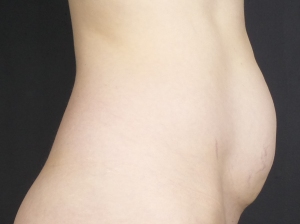
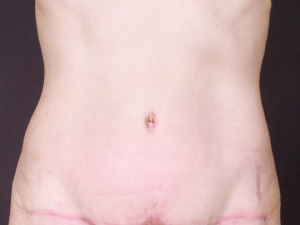
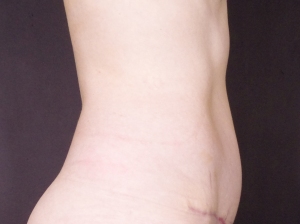
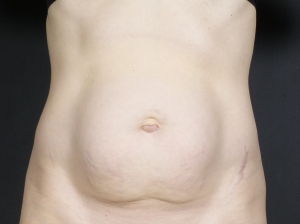

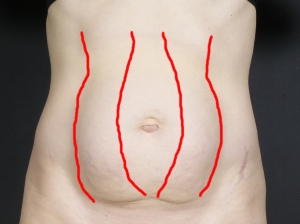
 I do child and family portrait photography. One of the tools in my gear bag is a set of reflectors…basically discs you can
I do child and family portrait photography. One of the tools in my gear bag is a set of reflectors…basically discs you can






